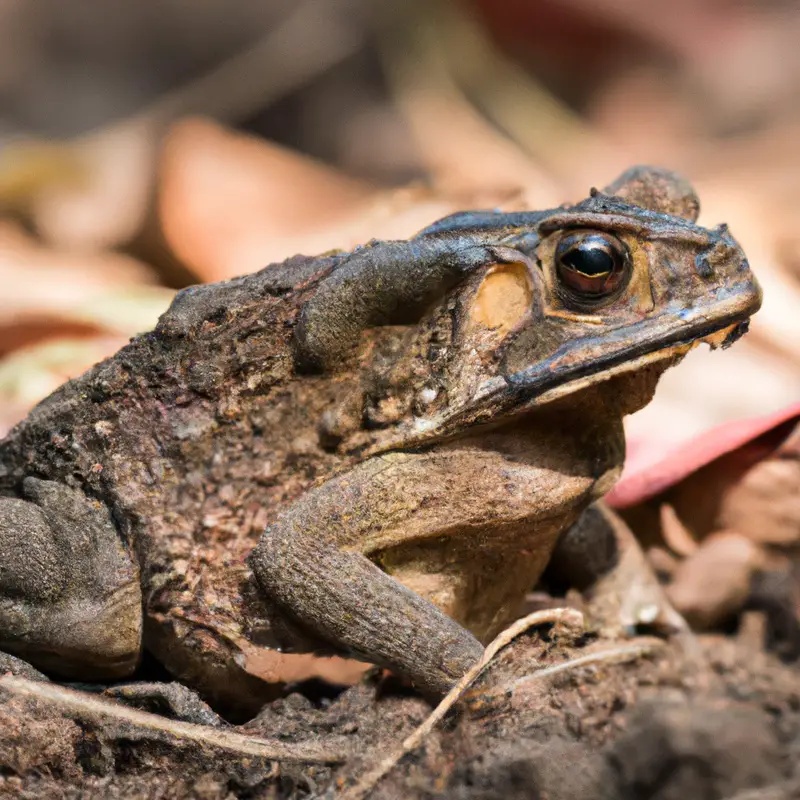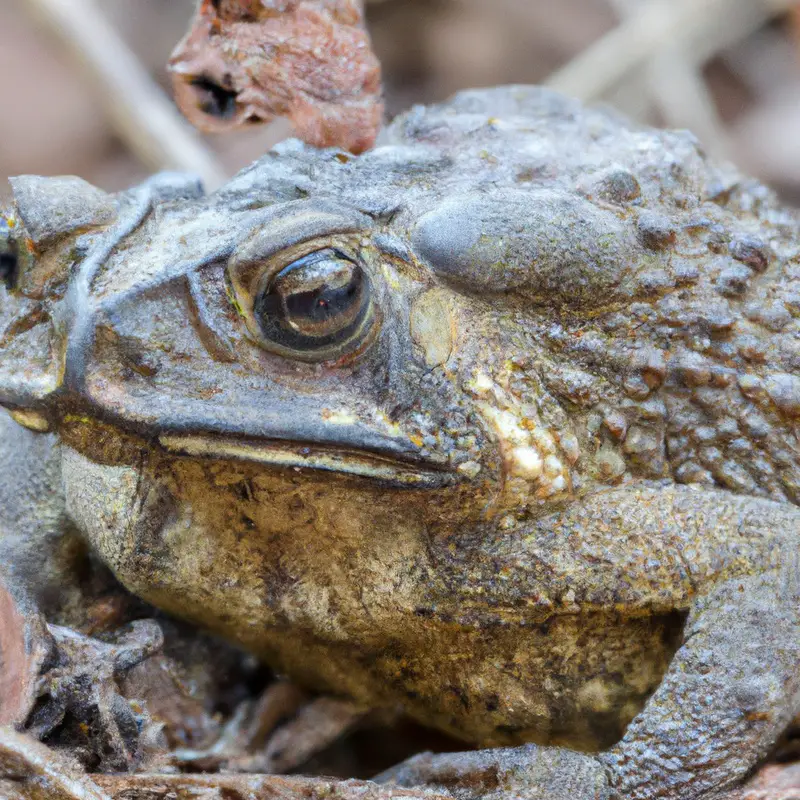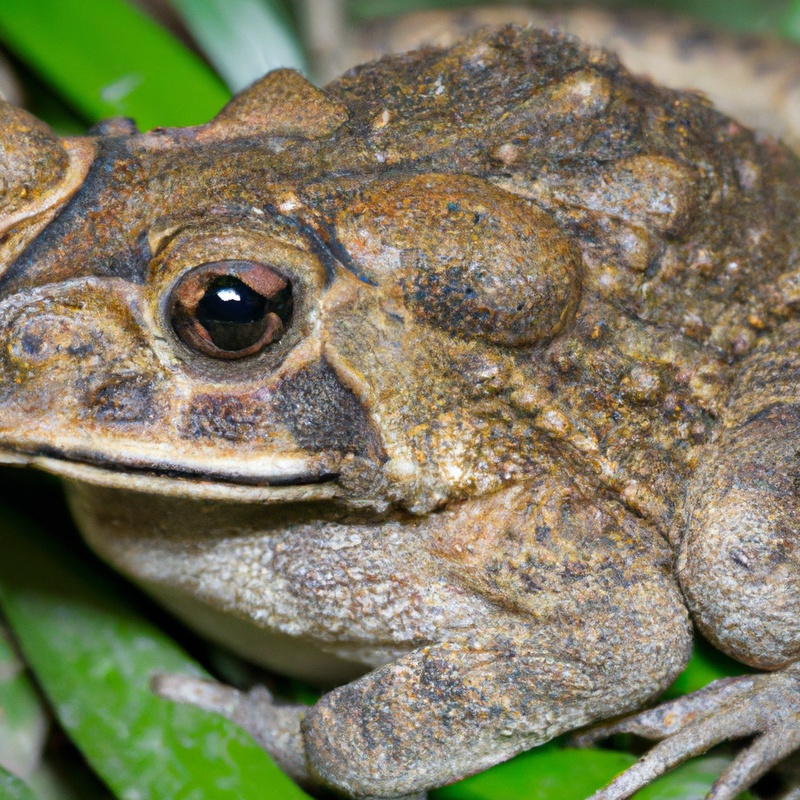Key Takeaways:
- Hunting pig frogs in Alabama is a popular activity among outdoor enthusiasts.
- Pig frogs are native to the southeastern United States, including Alabama.
- Alabama offers ideal habitats for pig frogs, with its vast wetlands and rivers.
- Hunters can enjoy both the challenge and the delicious meat that pig frogs offer.
Are you ready to dive into the thrilling world of pig frog hunting in Alabama?
As an expert in this unique pursuit, I’ll guide you through everything you need to know to embark on your own pig frog hunting adventure.
From understanding the physical characteristics and fascinating facts about these elusive creatures, to navigating the hunting regulations and permits required in Alabama, we’ll cover it all.
I’ll also share tips for locating pig frog habitats, the essential gear you’ll need, as well as techniques and strategies for a successful hunt.
Stay tuned to also discover the best ways to clean, cook, and enjoy the flavors of these delectable amphibians.
Get ready to hop into an unforgettable pig frog hunting experience!
| Hunting Pig Frogs in Alabama | |
|---|---|
| Pros | Cons |
| Abundant population | Restricted hunting season |
| Thrilling hunting experience | Difficult to locate |
| Delicious meat | Limited hunting areas |
| Opportunity to learn tracking skills | Requires specialized gear |
| Pig frog hunting is legal | Strict bag limits |
What is a Pig Frog?
Physical characteristics of Pig Frogs
Pig frogs are large amphibians with distinctive physical characteristics. They have a robust body and can grow up to 8 inches in size.
Their skin is rough and bumpy, providing them with excellent camouflage in their natural habitats.
Pig frogs also have powerful hind legs, which enable them to make impressive jumps and swim efficiently in the water. Their eyes are positioned high on their head, allowing them to see above the water while remaining mostly submerged.
Additionally, pig frogs have a deep, resonating call that resembles the sound of a pig, hence their name.
Diet and habitat of Pig Frogs
Pig frogs primarily eat insects, small fish, and crustaceans.
They are opportunistic feeders, meaning they will eat whatever prey is available to them in their habitat.
As for their habitat, pig frogs are typically found in freshwater wetlands, ponds, and slow-moving streams.
They prefer areas with abundant vegetation and shallow water, as these provide ample cover and food sources.
It’s important to note that pig frogs are semi-aquatic, spending time both in the water and on land.
They are well adapted to their wetland habitats and play a vital role in the ecosystem by controlling insect populations.
Their diet and habitat are closely intertwined, as the availability of prey and suitable environments dictate their survival.

Interesting facts about Pig Frogs
Pig frogs, also known as pig frogs, are fascinating creatures. Here are some interesting facts about them:
- Size: Pig frogs can grow up to 5.5 inches in length, making them one of the largest frog species in North America.
- Appearance: These frogs have a distinct appearance, with a round body, warty skin, and a dark green or brown color. They also have a distinctive call that sounds like a pig’s grunt.
- Habitat: Pig frogs can be found in the southeastern United States, particularly in wetlands, marshes, and slow-moving rivers and streams.
- Diet: They are opportunistic feeders, consuming a variety of prey including insects, small fish, tadpoles, and even other frogs.
- Breeding: Pig frogs breed during warm months, and their females can lay thousands of eggs in water bodies. The tadpoles undergo metamorphosis to become adult frogs.
- Vocalization: Male pig frogs produce a unique vocalization during the breeding season to attract females. Their call lasts for several seconds and can be heard from a long distance.
- Conservation: Due to habitat loss and degradation, pig frogs’ populations have declined in some areas. Efforts are being made to protect and conserve their habitats.
These are just a few interesting facts about pig frogs. They are fascinating creatures to study and observe in their natural habitats.

Hunting Regulations for Pig Frogs in Alabama
Hunting season and bag limits for Pig Frogs in Alabama
The hunting season for Pig Frogs in Alabama starts on the first day of October and ends on the last day of December. During this period, you are allowed to hunt Pig Frogs using a valid hunting license.
However, it’s important to note that there are bag limits in place to ensure sustainable hunting practices.
In Alabama, the bag limit for Pig Frogs is 25 per day. This means that you are allowed to harvest up to 25 Pig Frogs on a daily basis.
It is crucial to follow these bag limits to preserve the population of Pig Frogs and maintain the ecological balance.
Required permits and licenses for hunting Pig Frogs in Alabama
To legally hunt Pig Frogs in Alabama, you will need a valid hunting license issued by the Alabama Department of Conservation and Natural Resources. Additionally, a Wildlife Management Area (WMA) License may be required if you plan to hunt in designated WMAs. Each license has specific fees and can be obtained online or from authorized vendors.
It is important to check the current regulations and bag limits for Pig Frogs as they can vary from season to season.
Remember to always carry your license while hunting and follow all hunting laws and regulations.

Legal hunting methods for Pig Frogs in Alabama
Legal hunting methods for Pig Frogs in Alabama include using firearms, archery equipment, and gigs.
Firearm hunting requires a valid hunting license and season-specific regulations must be followed.
Archery equipment, such as bows and arrows, can also be used during designated hunting seasons.
Additionally, gigs, which are long poles with a pronged head, can be used to capture Pig Frogs by hand.
It’s important to check the local regulations and restrictions before hunting to ensure compliance with the law.
Tips for Hunting Pig Frogs
Locating Pig Frog habitats in Alabama
To locate Pig Frog habitats in Alabama, you’ll want to focus on wetland areas. These frogs are typically found near slow-moving or stagnant bodies of water, such as swamps, marshes, and ponds.
Look for areas with thick vegetation and plenty of aquatic plants, as the Pig Frogs prefer areas with abundant hiding spots.
They’re nocturnal, so try searching during the evening or early morning when they are most active. Don’t forget to listen for their distinctive deep, pig-like grunts, as they can help guide you to their location.
Equipment and gear needed for Pig Frog hunting
To go Pig Frog hunting, there are a few pieces of equipment and gear that you will need.
Here is a concise list of what you’ll want to bring along:
- A reliable flashlight: Pig frogs are nocturnal creatures, so having a good quality flashlight is essential for spotting them in the dark.
- Hunting boots: The hunting grounds can be wet and muddy, so invest in a pair of waterproof hunting boots that provide good traction.
- Camouflage clothing: Blend in with the surroundings by wearing camo clothing that matches the environment you’ll be hunting in.
- A shotgun or a bow: Choose a weapon that you are comfortable using and that adheres to local regulations for hunting pig frogs.
- Ammunition: Make sure to bring enough ammo for your weapon, and consider using non-toxic loads to minimize environmental impact.
- Binoculars: Use binoculars to scan the area and spot pig frogs from a distance.
- Insect repellent: Protect yourself from pesky mosquitoes and other insects by applying insect repellent before heading out.
Remember to always check local hunting regulations and obtain any necessary permits before you embark on your pig frog hunting adventure.
Take these essential items with you, and you’ll be well-prepared for a successful hunting trip.
Techniques and strategies for hunting Pig Frogs
When hunting Pig Frogs, there are a few key techniques and strategies you can employ to increase your chances of success:
- Scout the area: Before heading out, familiarize yourself with the hunting grounds. Look for areas with dense vegetation, shallow water, and muddy banks where Pig Frogs are likely to hide.
- Choose the right time: Pig Frogs are most active during twilight and nighttime. Plan your hunting trips accordingly to maximize your chances.
- Use a powerful light source: Invest in a high-quality spotlight or headlamp to help you spot Pig Frogs in the dark. It’s important to aim the light carefully and not directly at the frog’s eyes, as this can temporarily blind or disorient them.
- Utilize a frog gig or spear: It’s recommended to use a frog gig or spear when hunting Pig Frogs. These tools are designed specifically for catching frogs and ensure a clean kill.
- Approach slowly and quietly: Move stealthily towards your target, as Pig Frogs are known to be easily spooked. Make sure to minimize any noise and sudden movements that could alert them.
- Know the legal regulations: Familiarize yourself with the hunting regulations in your area to ensure you are hunting within the proper guidelines and seasons. This helps protect the population and preserves the sport for future enthusiasts.
Remember, patience is key when hunting Pig Frogs.
With the right techniques and some practice, you’ll improve your chances of bringing home a successful catch.
Cleaning and Cooking Pig Frogs
Cleaning and dressing Pig Frogs
Cleaning and dressing Pig Frogs is a straightforward process.
First, grab the frog firmly and locate the hind legs.
Use a sharp knife to make a shallow slit around the base of each leg.
Gently peel the skin down over the legs like removing a sock.
Next, remove the head by cutting just below it.
Peel the remaining skin off the body, being careful not to puncture the organs.
Finally, rinse the frog thoroughly with cold water and it’s ready to be cooked.
Simple, right?
Popular Pig Frog recipes
Looking for some tasty ways to enjoy pig frogs? Here are a few popular recipes to try out:
- Frog Legs Cajun Style: Season frog legs with a mix of Cajun spices, then fry until crispy. Serve with a side of rice and a spicy dipping sauce for a delicious Louisiana-inspired dish.
- Frog Leg Fritters: Make a batter from flour, eggs, and your favorite seasonings. Dip frog legs in the batter and fry until golden brown. Enjoy as an appetizer or main course.
- Grilled Frog Legs with Lemon Butter: Marinate frog legs in a mixture of olive oil, lemon juice, garlic, and herbs. Grill over medium heat until cooked through and baste with melted butter for added flavor.
- Frog Leg Gumbo: Use frog legs as a delicious protein in your favorite gumbo recipe. Slow-cook with a medley of vegetables, spices, and broth for a hearty and flavorful meal.
- Frog Leg Stir-Fry: Sautee frog legs with colorful vegetables like bell peppers, onions, and snap peas. Add a soy-based sauce and serve over rice or noodles for a quick and tasty stir-fry.
Remember, when cooking frog legs, it’s important to thoroughly clean and prepare them before cooking. Enjoy these recipes and get creative with your own variations!
Safety guidelines when handling and cooking Pig Frogs
When handling and cooking Pig Frogs, it’s important to follow safety guidelines to ensure a safe and enjoyable experience.
Here are some key tips:
- Cleanliness is key: Wash your hands thoroughly before and after handling Pig Frogs to prevent the spread of bacteria.
- Properly cook the meat: Cook Pig Frog meat thoroughly, reaching a minimum internal temperature of 165°F (74°C to eliminate any potential pathogens.
- Don’t cross-contaminate: Use separate cutting boards, utensils, and plates for raw and cooked Pig Frog meat to avoid cross-contamination.
- Be cautious of allergies: If you have any seafood allergies, be aware that Pig Frogs belong to the frog family and may have similar allergens.
- Store and handle safely: Keep Pig Frog meat refrigerated below 40°F (4°C and consume it within a few days to maintain freshness and prevent foodborne illnesses.
Frequently Asked Questions about Pig Frog Hunting
Can you eat Pig Frogs?
Sure, you can eat Pig Frogs. They are edible and are sometimes harvested for their meat.
The meat is usually described as having a mild flavor and a texture similar to chicken.
Pig Frogs are commonly used in Cajun and Creole cuisine, and there are various recipes available if you want to give it a try. However, please check local regulations regarding hunting and harvesting Pig Frogs, as there may be restrictions in certain areas.
Enjoy your meal!
What is the best time of year to hunt Pig Frogs?
The best time of year to hunt Pig Frogs is during the spring and summer months, specifically from April to September.
During this time, the weather is warmer, which means that Pig Frogs are more active and abundant.
Additionally, they are known to breed and lay eggs during the spring months, making them more likely to be found in larger numbers.
It’s important to note that regulations and restrictions may vary depending on your location, so always check with local authorities before hunting Pig Frogs.
Are there any restrictions on hunting Pig Frogs in certain areas of Alabama?
In certain areas of Alabama, there are restrictions on hunting Pig Frogs.
These restrictions are put in place by the Alabama Department of Conservation and Natural Resources (ADCNR) to ensure the conservation and sustainable management of wildlife populations.
It is important to check with the ADCNR or the local wildlife management agency to understand the specific regulations and seasons for hunting Pig Frogs in your desired area.
This will help you stay compliant with the laws and contribute to the overall conservation efforts.
Final Verdict
Hunting Pig Frogs in Alabama can be an exciting and rewarding experience for avid hunters.
With their unique physical characteristics and habitat preferences, Pig Frogs provide a challenging target for those seeking a hunting adventure.
By following the hunting regulations, obtaining the necessary permits and licenses, and employing effective hunting techniques, hunters can maximize their chances of a successful hunt.
Additionally, proper cleaning and cooking methods ensure a delicious meal from your catch.
So, get out there and enjoy the thrill of hunting Pig Frogs in the beautiful state of Alabama!









